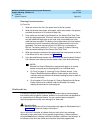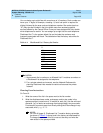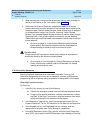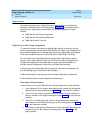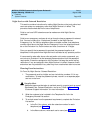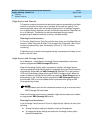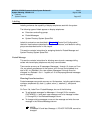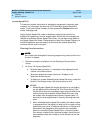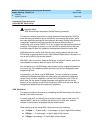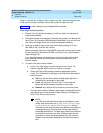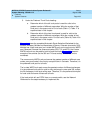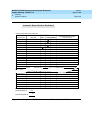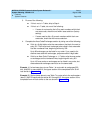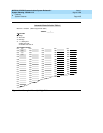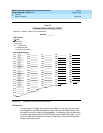
MERLIN LEGENDCommunications System Release 6.1
System Planning
555-661-112
Issue 1
August 1998
Features
Page 4-59System Features
4
Automatic Route Selection
(Hybrid/PBX Mode Only) 4
!
SecurityAlert:
ARS should always be used for the best security protection.
This section contains instructions for using Automatic Route Selection (ARS) to
allow the most cost-effective use of lines/trunks connected to the system, which
can mean significant savings for the customer’s business. Routing calls efficiently
is especially important when the business has several different types of
lines/trunks, such as local, WATS, FX, or tie, or uses more than one long-distance
company. If the system is pooled, you can use ARS to specify which trunk pool
should be used for each call, based on the telephone number the caller dials.
ARS tables can be used to route calls across a private network and out to the
PSTN using a remote system’s trunks. See
Network Reference
for information on
how to set up ARS for the private network.
With ARS, users must dial a before dialing any 10-digit toll number, even if the
local telephone company does not require a toll-call prefix.
You can define up to 16 ARS tables, each divided into two
subpatterns
based on
the time of day. Four additional tables are factory-set and are designed to save
programming time.
In this section, you define a set of ARS tables. This set includes a list of area
codes and exchanges associated with each table, the preferred and alternate
routes (if any) for each subpattern, and the Facility Restriction Level (FRL) for
each route. As the system manager becomes more familiar with the calling
patterns of the company and with the intricacies of ARS, he or she may want to
change these patterns to suit the particular installation.
ARS Worksheet 4
This section contains instructions for completing the ARS worksheet (Form 3e) to
decide how to best route calls.
For each trunk pool, you identify the trunk pool number, type of trunk (local, FX,
regional WATS, and so on), whether the calls are toll or local calls, and the
number of area codes or exchanges the pool should serve.
When placing a toll call using ARS, callers dial one of the following:
■ 11 Digits. 1 + 3 (area code) + 3 (exchange) + 4 (last 4 digits of the number)
■ 8 Digits. 1 + 3 (exchange) + 4 (last 4 digits of the number)
■ 7 Digits. 3 (exchange) + 4 (last 4 digits of the number)



